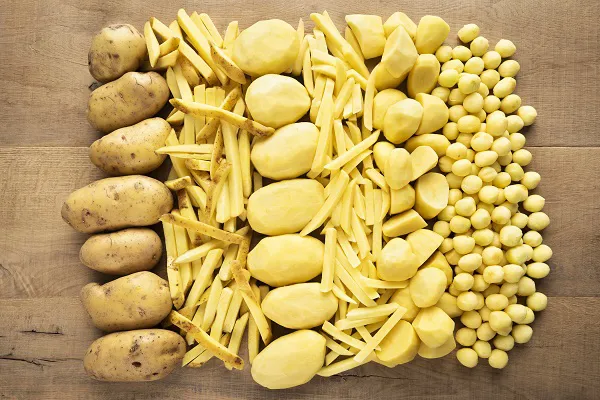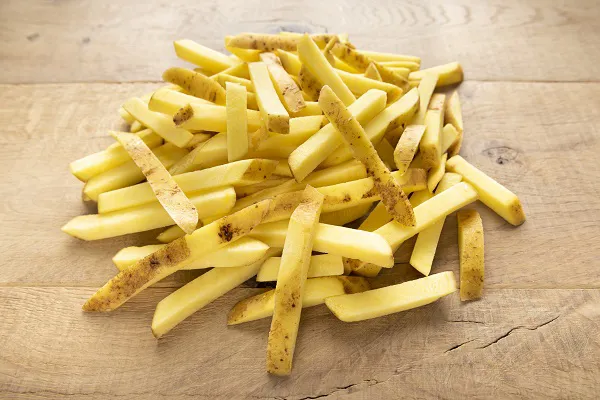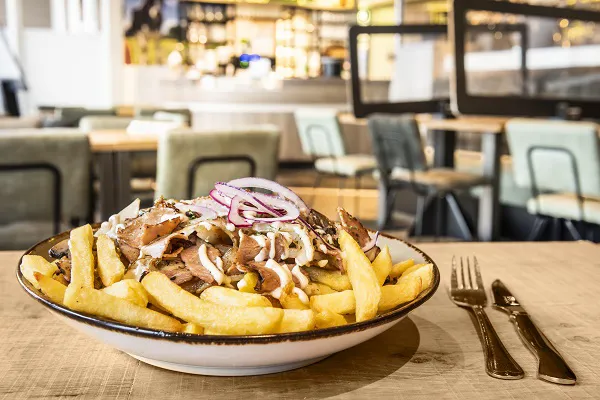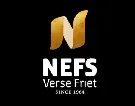"There's good demand," begins Kees Nefs of the Dutch company Nefs Aardappelen about the fresh-cut fries market. Besides peeled and unpeeled potatoes, he supplies fresh-cut fries mainly to cafeterias and eateries. Kees says demand is back to pre-pandemic levels. What does remain from that time is restaurants doing deliveries. "That's not only because of the pandemic; that's a general trend."

"Deliveries did decrease again after the pandemic, but more restaurants do deliveries than before," says Kees, also noting that there is demand for unpeeled fries, though more by restaurants. Diners order these less, though some sell these alongside regular fries. Although these smaller eateries mainly want standard fry sizes, they increasingly offer varied toppings. "Instead of just standard fries, you can now get Italian or Spanish fries or topped with spring onions."
Hardship
Naturally, the current economic hardship affects this French fries company, too, leaving Kees to wonder how this market will develop in these times. "It's difficult all around. I don't know if, in six months, people will still be able to afford to get takeaway fries. They're affordable, but people have only so much money," explains Kees. That is also accelerating the transition to more sustainable business. For example, Nefs Aardappelen is investing in electric trucks. "We were already working on sustainability and have solar panels, for instance, but the energy crisis is speeding that up. We use a lot of refrigeration, and our processes are mechanical; that consumes a lot of power, so we're paying attention to that."

Higher costs, narrower margins
Kees consider rising costs one of the most significant current challenges, and that is pushing up fresh French fry prices. He cannot help but pass some of those increased costs on. "Cost prices are higher, and margins are narrower. We have to cover some of those higher costs from our profits," he continues. The high costs mean the businessman must remain alert. Nefs points out that his company serves the region with fresh fries, and expanding that area is no longer viable. "You have to ensure your route remains profitable. You simply can't drive 60-70 kilometers for a new customer; volumes are too small, and the costs are too high."

Regional supply
The same goes for his supply of potatoes. While the focus has always been primarily on regional potatoes, those occasionally came from Belgium or France. That is no longer convenient, Kees observes. "With the high transportation costs and tolls, that's almost impossible for us to do," he says. The Dutch company uses local Frieslanders, Bintjes and Agrias. "I buy some on contract and the rest on the free market. This year's harvest is such that I won't run out of potatoes, and their quality is also good."

The demand for fresh fries made from Bintjes remains, but, notes Kees, fewer and fewer of these are being cultivated. "These are only grown for a short period each time, and their volumes constantly decline. But when they're available, we have them," concludes Kees, admitting that this variety does not tolerate dry weather conditions well, thus making it increasingly unsuitable. (MW)
Kees Nefs
kees@nefsaardappelen.nl  Nefs Aardappelen
Nefs Aardappelen
info@nefsaardappelen.nl
www.nefsaardappelen.nl
T: +31 (0) 164 682 113
